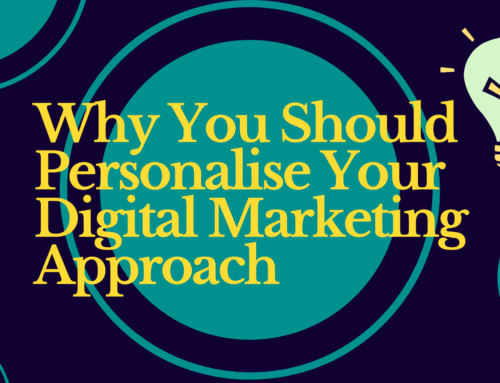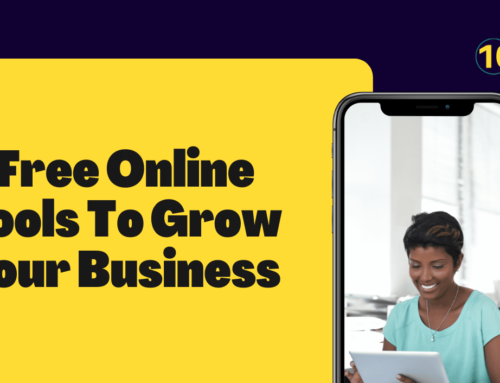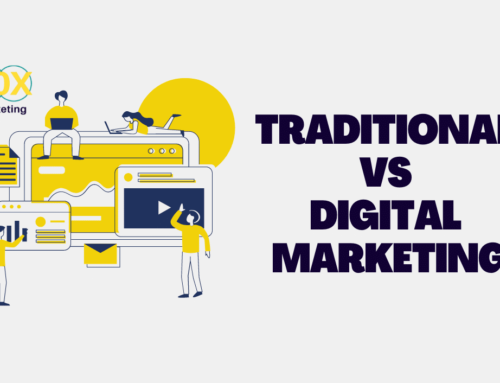When businesses find themselves in the midst of a crisis on the scale of COVID-19, marketing departments are often the first to have their budgets dramatically reduced.
But this does not mean that your marketing should take a back seat. In fact, it’s quite the opposite.
How you interact with your customers and respond to their changing needs at such a challenging time will determine if and how your business survives, and marketing is an essential part of this recovery.
To help you adapt your marketing strategy, we’ve put together 7 top tips to follow to ensure you retain customers and keep your brand visible throughout lockdown and beyond.
- Keep your customers up-to-date
First and foremost, it’s essential that you maintain communications with your customers and make it easy for them to contact you. Keeping an open line of communication enables you to not only continue doing business (if this is possible), but also keep your customers up to date on any important information that might affect ‘business as usual’.
This can be anything from your current trading status, any changes to opening hours or delivery times, and even a change in product or service. The most important thing is to remain realistic on what you can offer and when, and anticipate any operational impacts in advance. Your customers will appreciate transparency.
The method that you use to communicate these messages will depend on who you want to reach. Email is the best way to contact all your customers at once, while social media has the benefit of reaching beyond your current customer base (although you cannot determine exactly who will see your message). Using a combination of the two, as well as a banner on your web page, should ensure that all customers are kept up to date on real-time changes and modifications.
- Get active on social media
With many of us spending the day working from home and the evening also indoors away from friends and family, some of the biggest social media platforms have, unsurprisingly, reported a huge spike in usage. In Italy during the first spike of COVID-19, Facebook saw time spent on its apps increase by 70%, and Instagram and Facebook Live views also doubled.
Despite being a few weeks behind Italy, the UK also saw a similar surge in the use of social media platforms for communication and entertainment. As a whole, there was an 82% increase in social media usage, with people spending an average of 4 hours on the apps (compared with 1.5 hours previously).
As people flock to social media like never before, it has become an even greater tool to promote your brand and increasingly leverage your online presence. Regardless of whether you are able to continue trading or not, getting active on social media is an effective way to keep your brand visible.
Getting active on social media can involve a number of things:
- Interacting with your customers and answering any questions they may have on your product or service.
- Commenting on and sharing relevant industry news – You’ll most likely be following relevant industry pages already, so finding relevant news shouldn’t be too tricky. However, certain platforms, such as Instagram and Twitter, make it extremely easy to search for certain terms and find relevant posts to interact with. If you want to be one of first places to share relevant news on social media, it’s worthwhile setting up Google Alerts with some keywords for your industry. Google will alert you when a relevant story comes up and you can share this directly to your business’ timelines.
- Designing your own social media graphics that link back to your website or blog post – If you do not have any design experience, do not worry. Free graphic design platforms such as Canva make it simple for you to create branded visuals from hundreds of readymade templates.
- Linking any other communication channels (such as emails, blog posts and your website) to your social media channels – Introducing your current customer base to your social platforms is one of the easiest ways to build followers as they have already shown interest in your product or service.
As well as an increase on main social media feeds, the first lockdown also led to a 50% increase in the use of instant messaging apps in some of the hardest hit countries. Utilising these built-in messaging systems is another great way to stay in touch with your customers and maintain that all important open line of communication.
- Give people something useful (and get creative with it)
At a time when consumers may be feeling particular cautious about where and how they invest their money, offering free resources is a good way to build interest and organically promote your band (you certainly don’t want to come out with a hard sell at a time like this).
There are so many creative and innovative ways to offer your customers something useful, but the most tried and tested include:
- Offering a free trial – Everyone appreciates a freebie, and this also applies to a free-trial of a normally paid service. You can approach this in two ways; either offering a free trial to new customers, or offering a free, upgraded version of your service to existing customers. Whilst a large portion of these users will choose to cancel their free-trial before the paid prescription starts, there will still be a portion of users who do become paying customers as a result.
- Hosting a webinar – Webinars are a great way to give your customers an expert insight into your business or industry and, in return, build up your contact list for future communications. You can decide to host a webinar on anything and everything, as long as it adds value to your brand and gives your customers information that they would have struggled to find elsewhere.
- Creating/Designing free resources or content – As with hosting a webinar, offering your customers a free download allows you to build contact details for people who fall within your target audience. It’s also a great way to boost traffic to your website as customers will have to visit your page in order to download the resource. Example resources could be anything from a ‘30-day workout calendar’ (if you own a gym, or sportswear brand) to ‘The ultimate bread making guide’ (if you own a bakery).
Other great ways to promote your brand whilst offering your customers something useful include; Live streaming an event (think ‘PE with Joe’), creating ‘how to’ videos of your most popular products, advertising free giveaway competitions, or even creating before and after transformation videos (this could work for many businesses such as hairdressers, cleaning companies, and car repair garages).
- Shift to online sales
In a recent study, 47% of marketers said they were shifting messaging to emphasise digital fulfilment, products or services, and this speaks volumes for the change in consumer behaviour during the COVID-19 pandemic. Creating a website for your business, or updating your current website to allow for online booking or ordering, is vital at a time when customers aren’t always able to visit brick-and-mortar stores.
By offering your customers the chance to purchase your items or services online, you are creating a more convenient customer experience and generating revenue at a time when you need it most.
If offering all of your usual products or services online is not possible, for example due to a smaller workforce or if some of your suppliers are also affected by the pandemic, look into selling the most popular options or those that will generate the greatest return on investment. And if this is still not possible, it may be time to think of creative ways to offer something a little different, such as selling an educational course relevant to your industry.
- Utilise paid ads
Whilst the thought of paid advertising may be at the bottom of your priority list at the moment, it’s worthwhile noting that, as so many businesses are putting their marketing on hold, the cost to advertise is actually coming down.
As digital marketing entrepreneur Neil Patel explains, “The latest trend we are seeing is that paid ads are becoming cheaper. It makes sense because the way these big ad networks make money is through an auction system. They need small businesses to drive up the cost per click (CPC) for ads so that way the big, billion-dollar corporations have to spend more money on ads. If you don’t have as many small businesses advertising (like we are experiencing now) there isn’t as much competition for the inventory, so the cost per click decrease.”
With social media usage and online traffic up and advertising costs down, investing a small amount of money in paid advertising could result in a high return on investment in the future. What’s more, the possible implications of not advertising during lockdown could have a greater impact on the long-term health of your business. If you do not keep your brand visible (even if it is unable to trade), consumers are likely to seek out a competitor who is.
- Check your copywriting and imagery is appropriate
However you decide to market during COVID-19, it’s important to remember that this global pandemic has real consequences for real people. The language and imagery you use in your messaging and advertising will set the tone for how customers perceive your brand during this challenging time, and therefore it’s vital that you get it right.
When checking both the imagery and copy that you are planning to use, make sure that it aligns with COVID-19 safety measures and is unlikely to give off the wrong message. Before publishing any content, check for the following:
- Do you have pictures of crowds or people touching?
- Do you need to change any call to action buttons for facilities that are closed, such as ‘visit today’?
- Do you have any troublesome phrases such as ‘killer content’ or ‘infectious laughter’?
- Do you have any scarcity-driven copy that may come across as ignorant or inappropriately excitable, such as ‘take advantage now’?
- Have you tried to use words such as ‘contact-free’ and ‘virtual’ to promote safety for your customers?
- If referencing COVID-19 directly, have you used credible sources such as the Centers for Disease Control and Prevention?
It’s also important that you carry out the same checks on any scheduled social posts and automated emails. If they were written a while ago, are they still appropriate? Putting out the wrong message when people are feeling particularly vulnerable could have disastrous consequences for your brand in the long-term.
- Listen to your customers
Whilst it has always been a massive part of forming a marketing strategy, listening to your customers’ thoughts and concerns is now more important than ever. When making any marketing decision, ask yourself; how are my customers feeling at the moment and how will this advert/campaign/resource help with that? After all, products and services are there to solve a problem.
If you aren’t sure on customer sentiment, monitor care emails, calls, chats and social media comments. You can also ask your sales team to relay any relevant information that they receive. Fully understanding your customers will help with every aspect of your marketing strategy.
Planning for the long-term
Adapting to change is never easy, particularly when faced which such an immense level of uncertainty, but the key is to think long-term. All too often, businesses make hasty decisions that provide short-term gain but ultimately cost them the trust of their customer base.
When looking to adapt your marketing for COVID-19, you should focus on two main goals; keeping your brand visible and maintaining an empathetic, honest and open line of communication with your customers.
If you need help getting your business online or would like further advice on how best to market during COVID-19, reach out to us at 10X Marketing and we’ll be happy to help.






